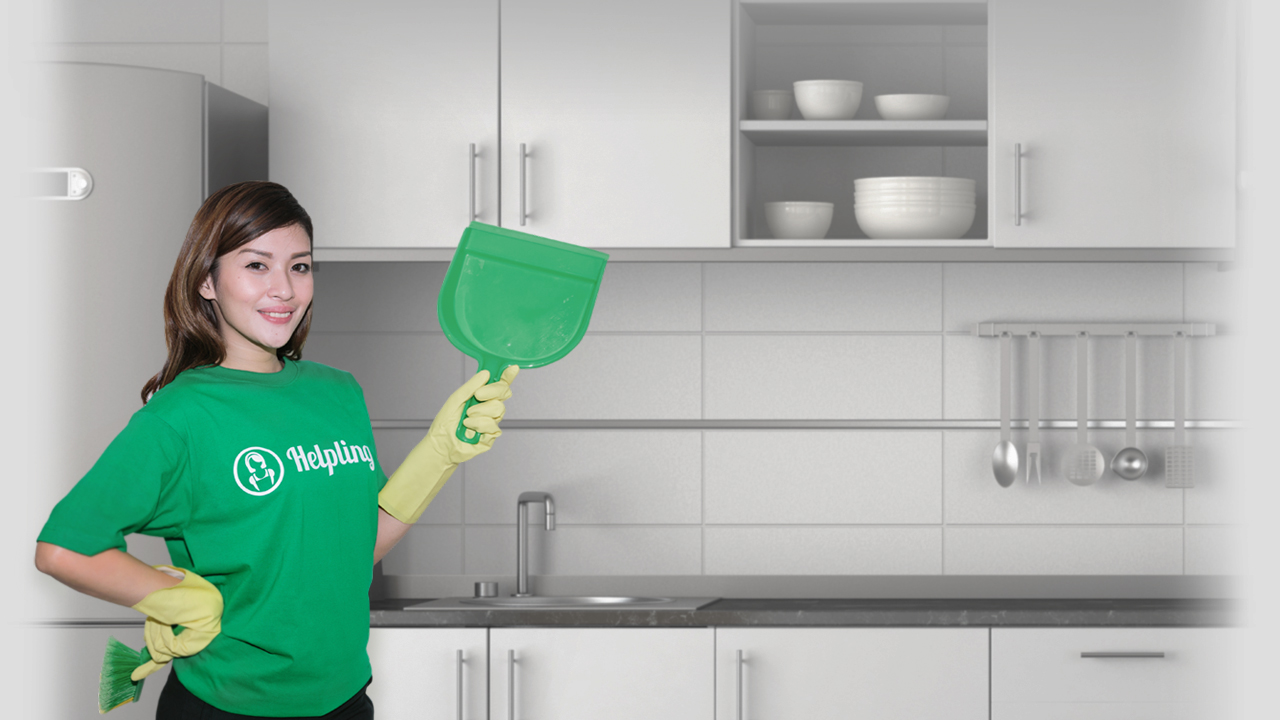
Image credit: Helpling.
Online marketplaces are among the most popular startup ideas. Uber, Airbnb, Grab – all marketplaces. The idea sounds deceptively simple: match supply and demand using a fancy algorithm. But the ducks often don’t line up in a row.
Helpling is another take on an online marketplace. It connects home owners to home services. Need your house cleaned? Book it through Helpling. It has just announced the raising of an additional US$11 million to realize its ambitions, bringing its total cash hoard to US$71 million.
Helpling hails from the famous Rocket Internet lineage. This latest funding round is led by APACIG, a joint venture between the German startup investor and Qatari telco Ooredoo. APACIG itself backs a number of startups, with Helpling being one of them.
TechCrunch reports that it’s a downround, however, which means that its valuation decreased as compared to the previous funding round. Not a good sign. “The new funding gives Helpling a significantly lower valuation than it attained during its previously disclosed US$45 million series B in March 2015.”
As with many new ventures, it’s still unclear if the millions in funding can get Helpling over the hump to become a viable business. Homejoy, a similar, much-hyped startup in the US, tried but failed. We’ve reached out to Helpling for comment, and are waiting for a response.
To Helpling’s credit, its business model is asset-light, and co-founder Benedikt Franke says in the press release that “its core business model is on a clear path to profitability within the next year.”
Clients don’t have loyalty to the middleman platform.
Yet asset-light models are often easy to replicate, especially before it can leverage network effects and become the dominant player.
The key question: can Helpling survive the onslaught of local and regional competition to become the last person standing? Google “cleaning services Singapore” and you’ll see plenty of options, some from equivalent marketplaces and some offered directly by vendors.
Together with the funding announcement, Helpling has also announced it’ll bring window cleaning, furniture assembling, and paint work to all its markets. That means it’ll overlap with startups like Kaodim, a marketplace for all kinds of services.
Locking in value
It’ll need to find ways to lock in value and prevent disintermediation – in other words, buyers and sellers ditching the marketplace to transact directly with one another.
“I think it’s a tough model because clients don’t have loyalty to the middleman platform,” says Poh Chen Wei, founder of Pegaxis, a business-to-business platform which connects service providers to properties.
Helpling’s challenge lies in how cleaning services are not interchangeable. With Uber, you don’t care which ride you get, so you keep using the app. With a cleaner, once you find a reliable one, you’d want to stick with her. That provides an opportunity for both parties to pry the transaction out of the middleman’s hands.
With the likes of Alibaba, Amazon, and Carousell, the fix is clear: more sellers equals more products equals more buyers. A virtuous cycle. With Helpling, the network effects doesn’t seem as strong.
“What platforms can do is reward users for staying loyal. Give them stuff to attain in the platform, reward them for using it, and so on. That’s why gamifying platforms work so well,” says Angeline Viray, a startup founder who runs Beep a Ride, an “Uber for car rentals.”
Joel Khoo, founder of tutoring marketplace Learnly, thinks adding a social element might help.
“Give the cleaners a channel or feed to log their outcomes there, like a social media feed of sorts. This is what a similar education platform like ClassDojo is doing: letting parents have a peek at what teachers are doing for their kids. A lot of marketplaces gravitate towards written reviews, but overlook the power of the social feed. But I foresee perhaps the cleaners would need a bit more social savvy,” says Joel.
Ultimately, it’s about providing value to both sides of the equation. How can vendors and consumers benefit from Helpling in a way that it becomes indispensable?
As a former user myself, I found its auto-payments features useful. Another user I spoke to appreciates that Helpling offers insurance (to protect against cleaners getting hurt at your home). But perhaps it needs to do a lot more.
This piece contains the opinions of the author.
This post Home services marketplace Helpling raises $11m, but can it survive? appeared first on Tech in Asia.